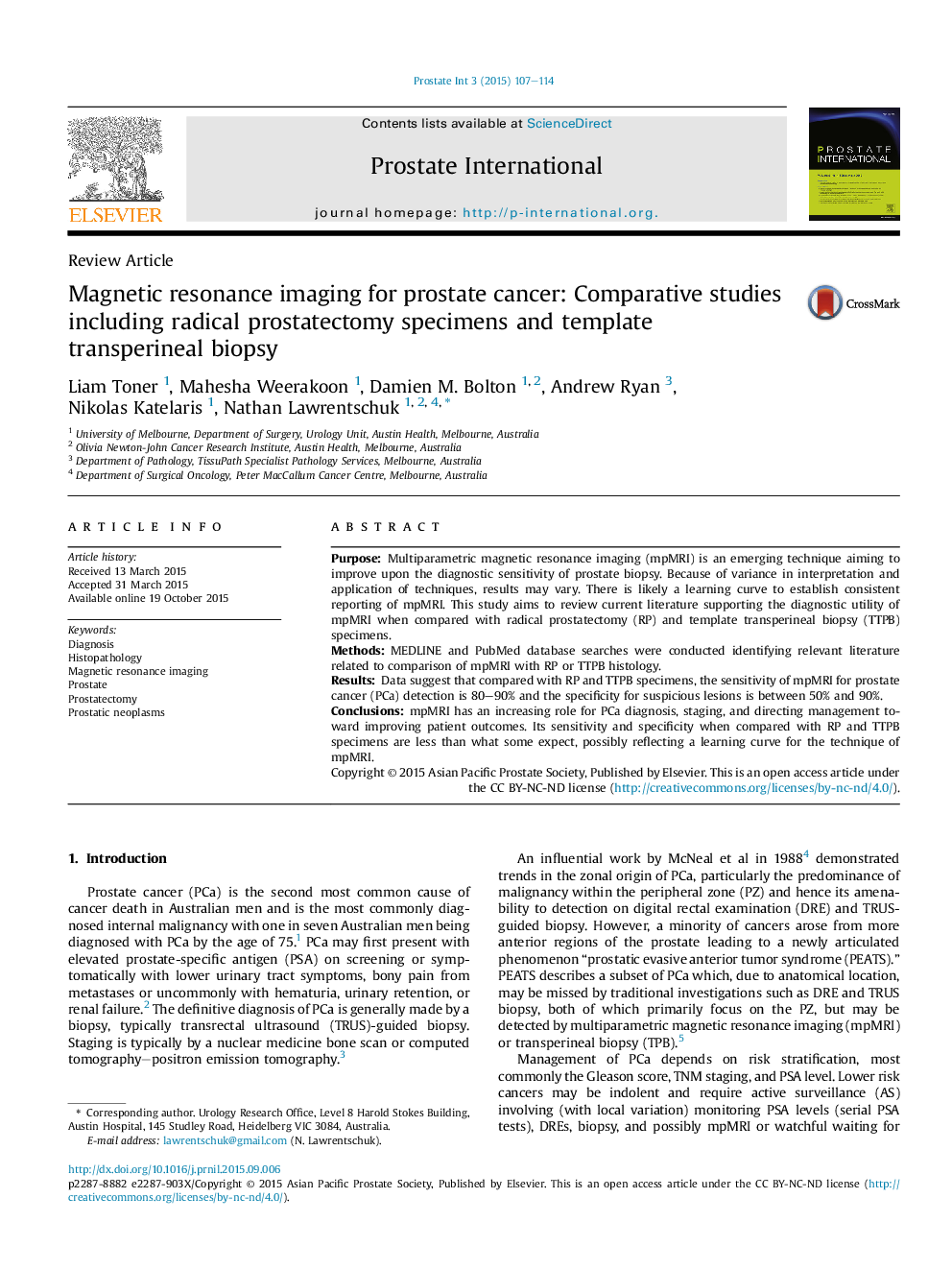| Article ID | Journal | Published Year | Pages | File Type |
|---|---|---|---|---|
| 4274088 | Prostate International | 2015 | 8 Pages |
PurposeMultiparametric magnetic resonance imaging (mpMRI) is an emerging technique aiming to improve upon the diagnostic sensitivity of prostate biopsy. Because of variance in interpretation and application of techniques, results may vary. There is likely a learning curve to establish consistent reporting of mpMRI. This study aims to review current literature supporting the diagnostic utility of mpMRI when compared with radical prostatectomy (RP) and template transperineal biopsy (TTPB) specimens.MethodsMEDLINE and PubMed database searches were conducted identifying relevant literature related to comparison of mpMRI with RP or TTPB histology.ResultsData suggest that compared with RP and TTPB specimens, the sensitivity of mpMRI for prostate cancer (PCa) detection is 80–90% and the specificity for suspicious lesions is between 50% and 90%.ConclusionsmpMRI has an increasing role for PCa diagnosis, staging, and directing management toward improving patient outcomes. Its sensitivity and specificity when compared with RP and TTPB specimens are less than what some expect, possibly reflecting a learning curve for the technique of mpMRI.
